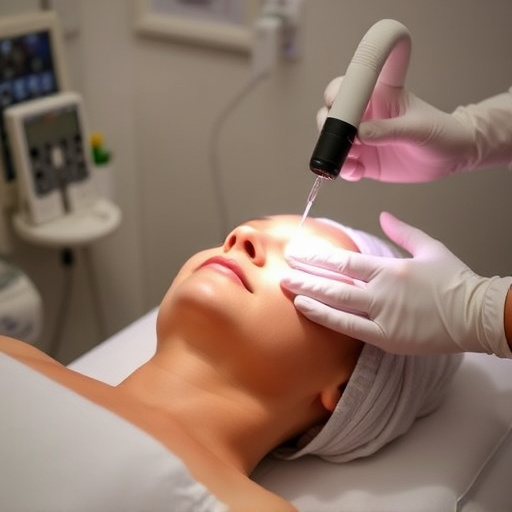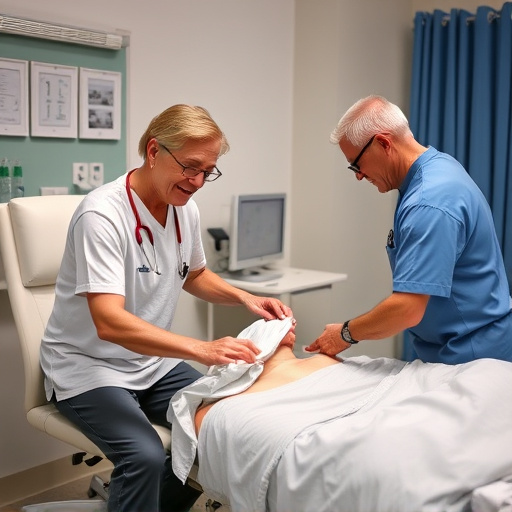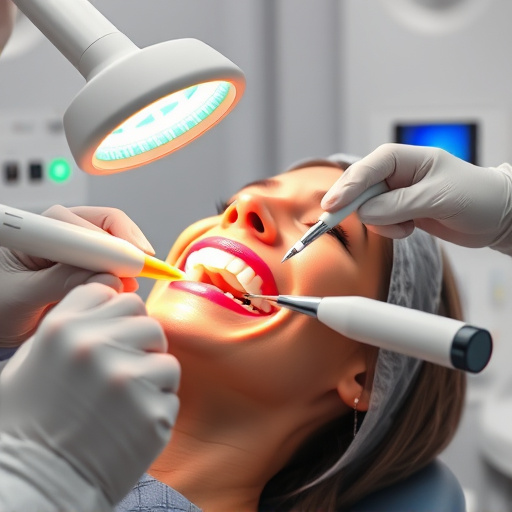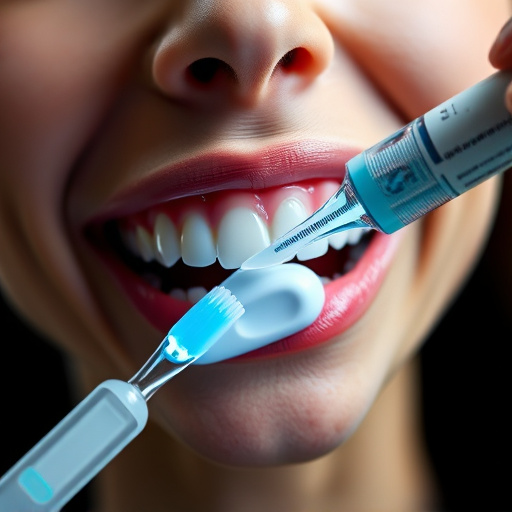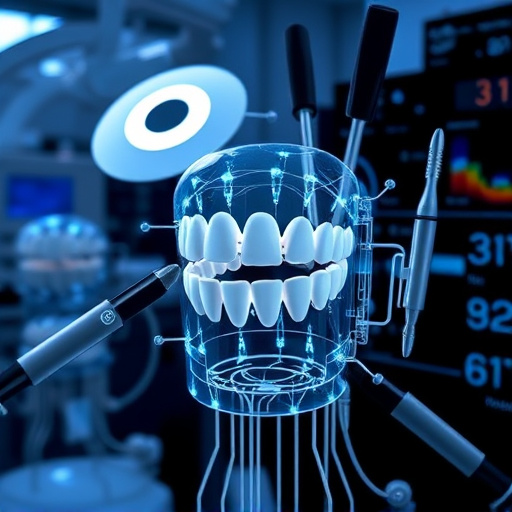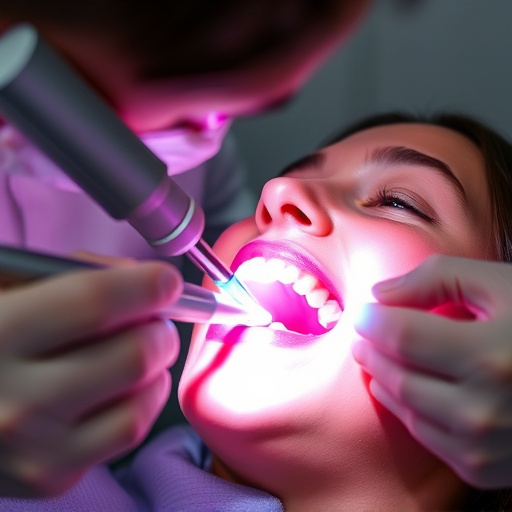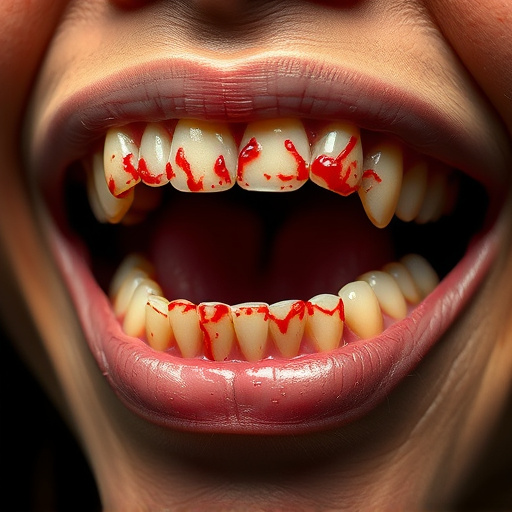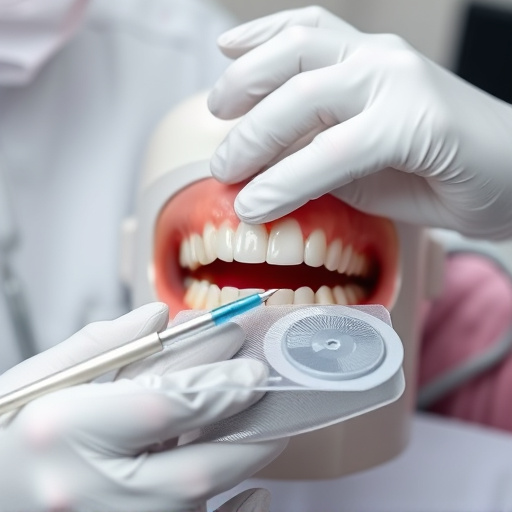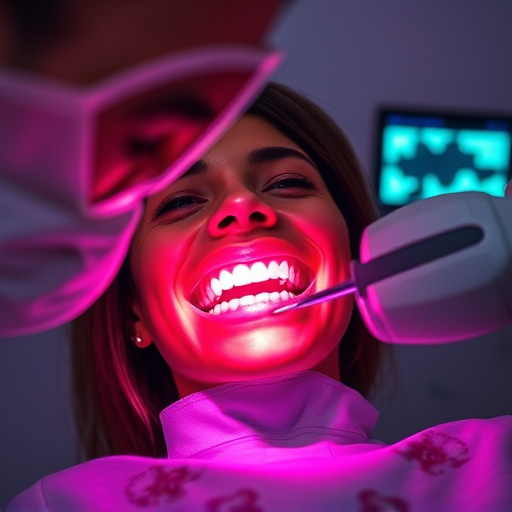TL;DR: 3D dental imaging is transforming dentistry by offering detailed, comprehensive views of oral structures, enabling early detection of decay, gum disease, and misalignments. Unlike traditional 2D X-rays, this technology provides precise insights for more accurate treatment planning, reducing the need for invasive procedures, and improving outcomes for patients of all ages, both adult and pediatric. It revolutionizes routine oral exams and fosters enhanced diagnostic accuracy during cleanings and other procedures.
“Discover how 3D dental imaging is transforming oral healthcare with its remarkable ability to reveal intricate dental structures and uncover potential issues early on. This advanced technology offers a non-invasive glimpse into your mouth, providing valuable insights that traditional 2D imaging cannot match. By detecting problems like tooth decay, gum disease, or structural abnormalities at their nascent stages, 3D imaging empowers both patients and dentists to make informed decisions, ensuring optimal oral health and more effective treatment planning.”
- Unlocking Dental Health Insights: The Power of 3D Imaging
- Early Detection: Identifying Potential Issues Before They Arise
- Advanced Technology, Improved Care: Benefits for Patients and Dentists
Unlocking Dental Health Insights: The Power of 3D Imaging

Unlocking Dental Health Insights: The Power of 3D Imaging
In the realm of modern dentistry, 3D dental imaging has emerged as a game-changer, transforming the way dental professionals assess and treat patients. This advanced technology offers a comprehensive view of oral structures, far surpassing the limitations of traditional 2D X-rays. By capturing detailed three-dimensional models of teeth, gums, and surrounding bone, 3D imaging provides an unprecedented level of insight into dental health.
This innovative approach enables dentists to detect even the smallest anomalies, such as early signs of decay, gum disease, or misalignments, with remarkable accuracy. For example, 3D imaging can reveal subtle changes in tooth structure, allowing for prompt intervention before a minor issue becomes a more serious problem, potentially saving patients from needing extensive procedures like dental fillings or crowns later on. Thus, it acts as a powerful tool in family dentistry, ensuring better oral health outcomes for patients of all ages.
Early Detection: Identifying Potential Issues Before They Arise

Early detection is a cornerstone of any healthcare practice, and 3D dental imaging has revolutionized the way we approach oral health. By providing detailed, three-dimensional visualizations of teeth, gums, and jawbones, this technology allows dentists to identify potential issues early on – even before they become problematic. Unlike traditional X-rays that offer a flat view, 3D imaging offers a comprehensive picture, revealing subtle changes in tooth structure, gum recession, or bone density shifts that might be missed otherwise.
This proactive approach is particularly beneficial for both adult and children’s dentistry. For example, 3D dental imaging can help detect early signs of decay, periodontitis, or even abnormal growths. In case of any concerning findings, dentists can then discuss options with patients, ranging from preventive measures to procedures like dental bonding, ensuring that potential problems are addressed promptly – often preventing the need for more intensive emergency dental care down the line.
Advanced Technology, Improved Care: Benefits for Patients and Dentists
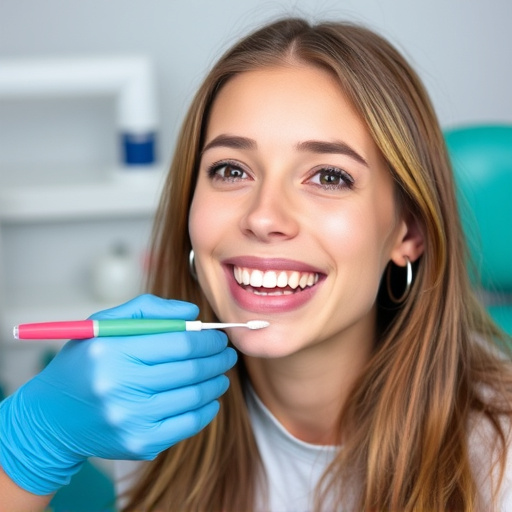
The integration of advanced technology like 3D dental imaging has revolutionized the way patients and dentists interact during routine oral exams. This innovative approach offers a more detailed and comprehensive view of dental structures, enabling earlier detection of potential issues. With 3D imaging, dentists can identify subtle changes or abnormalities that might be missed during traditional 2D radiography. This early problem detection is crucial for implementing prompt and effective treatment strategies, thereby improving overall oral health outcomes.
Not only does 3D dental imaging benefit patients by potentially reducing the need for invasive procedures like cosmetic fillings, but it also aids dentists in planning more precise and conservative treatments. By accurately visualizing the mouth’s intricate anatomy, including tooth positions, gum lines, and jaw relationships, dentists can tailor their approach to specific needs during procedures such as dental cleanings. This technology fosters improved care by enhancing diagnostic accuracy and treatment planning, ultimately leading to better patient outcomes.
3D dental imaging is transforming dental care by providing a comprehensive view of oral health. By enabling early problem detection, this advanced technology allows dentists to identify potential issues before they become serious, leading to improved patient outcomes and enhanced care. Incorporating 3D dental imaging into routine checkups is a step towards a healthier, more vibrant smile for everyone.



